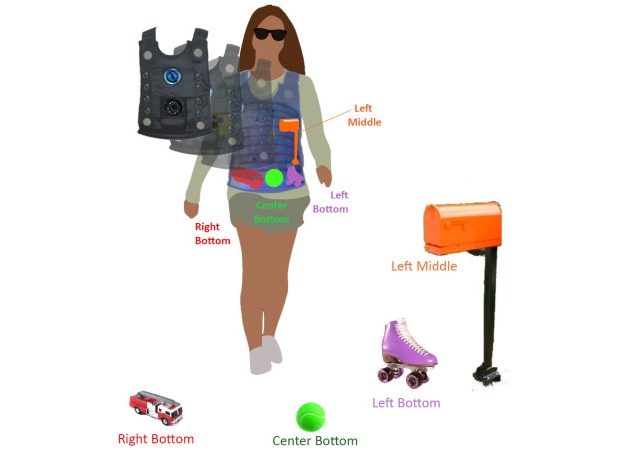Vibrating Clothes Could Help Blind People Navigate

Today's prosthetic limbs restore many of the functions of missing limbs, but technology for overcoming blindness remains limited. Now, a team of researchers hopes to change that, by developing high-tech clothing that could help visually impaired people navigate.
The New York-based company Tactile Navigation Tools is developing a hands-free wearable device that uses sensors to detect obstacles and can alert the wearer to them with vibrations. Known as Eyeronman, the device could aid not only the blind, but also firefighters, soldiers and others, its developers say.
About 285 million people worldwide are visually impaired, according to the World Health Organization. Yet in developed countries, most blind people still navigate using the standard white cane, which was invented in 1921. [Bionic Humans: Top 10 Technologies]
When soldiers return from war, "the ones with limb loss are getting expensive devices, but the ones with vision loss — we're giving them a stick," said Dr. JR Rizzo, a rehabilitation doctor at NYU Langone Medical Center and the company's founder and chief medical adviser. "It's a little ridiculous," he said.
When Rizzo was 15 years old, he was diagnosed with choroideremia, a rare retinal degenerative disease that causes progressive vision loss, and he is now legally blind. He thinks blind people should have more advanced sensory prostheses.
"I don't care what the vision loss is from," Rizzo told Live Science. The goal is to increase mobility and get people integrated back into society, he said.
Navigation by vibration
Get the world’s most fascinating discoveries delivered straight to your inbox.
Eyeronman consists of a vest outfitted with sensors and emitters for lidar, a laser-based system used in driverless cars; ultrasound, which is used by bats and other animals for echolocation; and infrared, a type of electromagnetic radiation used by pit vipers to detect prey by sensing body heat.
The system converts input from these sensors into vibrations in a T-shirt made from electro-active polymers. For example, an obstacle on the wearer's lower left would cause the lower-left part of the shirt to vibrate. The system is designed to provide 360-degree obstacle detection, its developers say.
Studies show that visually impaired people use parts of the brain that are normally used for vision to process auditory input, which suggests that the brain is inherently plastic— itcontinually adapts and forms new neural connections. The Eyeronman users would make use of this plasticity to train themselves to use the device.
Just as the deaf-blind author and political activist Helen Keller was able to understand the concept of water by feeling it while having it spelled on her hand, a blind person could walk past a table and feel it by vibration, Rizzo said.
The patent-pending Eyeronman system could also be used by soldiers in combat, police or firefighters, who may have limited vision at night or due to smoke from fires or explosions, according to the company's website.
Some people have created similar devices, Rizzo said, but no one has created a platform that detects the shape of objects and displays them on the body like his team's invention does.
Right now, the system is still in the prototype phase. The researchers have developed a version that displays the sensor input to the shirt by lighting up LEDs, instead of producing vibration, but the principle is the same, Rizzo said.
Not all of the sensors will work ideally in all environments, so the researchers need to determine which ones work best and figure out how they can be made inexpensively, he said.
"There are lots of challenges, but I don't think any are to the point where we can't get on top of them," Rizzo said.
Follow Tanya Lewis on Twitter and Google+. Follow us @livescience, Facebook & Google+. Original article on Live Science.



